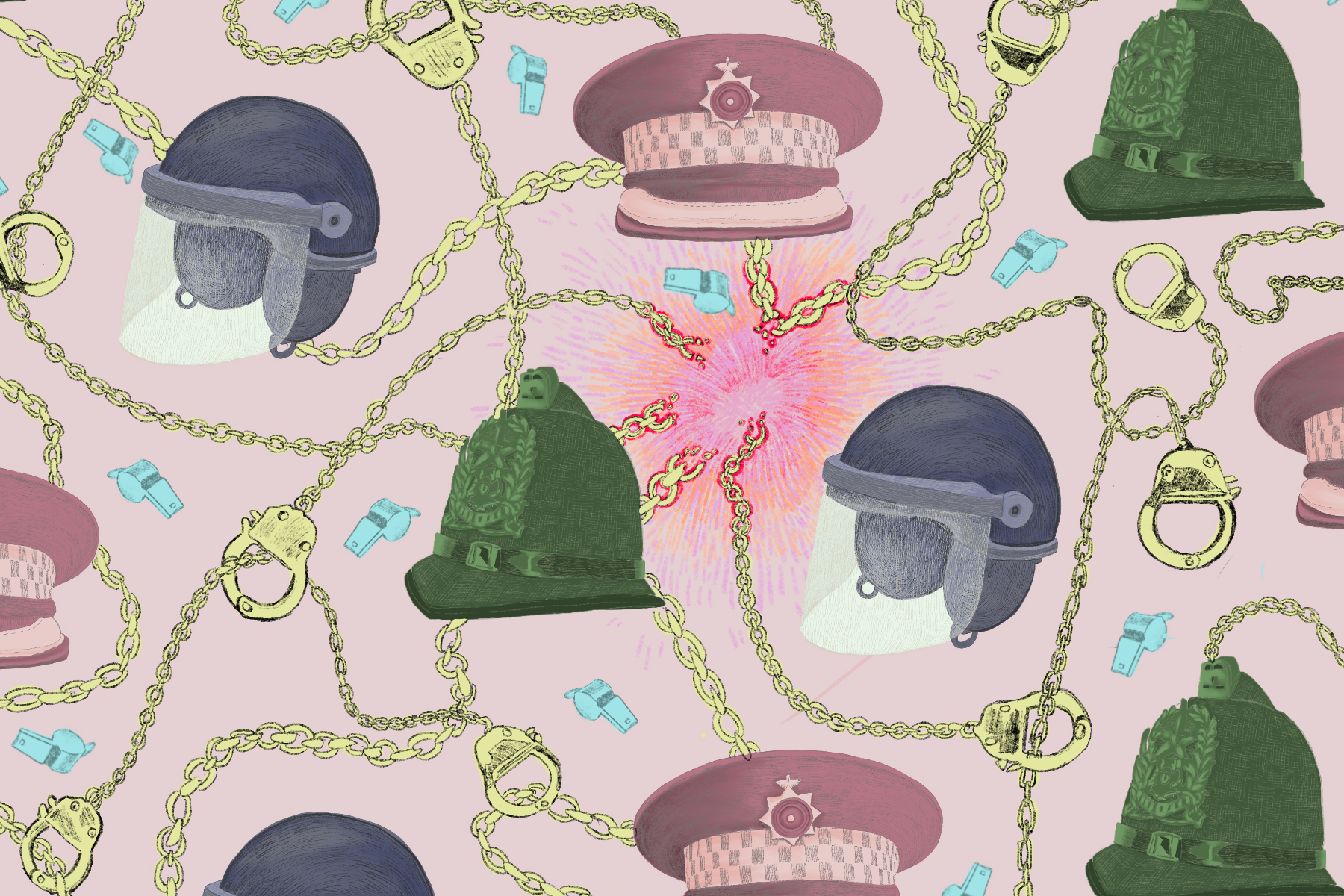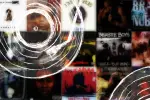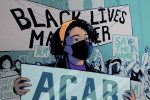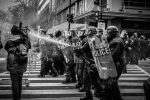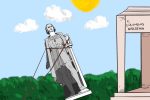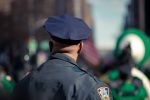The murder of George Floyd by Minneapolis police officers on May 25 sent shockwaves through the nation. Described as a “wake-up call” by some, the jarring nature of the violence has led to a nationwide reckoning. Protesters across the country have made it clear that racially charged policing and brutality is no longer tolerable, through both language and outright civil disobedience.
City officials can no longer have both: It is impossible to acknowledge the police killings of Black people whilst ignoring the role the police play in actively upholding white supremacy. For the first time, mainstream politics has cast a spotlight on the realities of a world without police. Cities are even taking the first major steps to shifting power away from law enforcement and back into communities.
It comes as no surprise that this moment has galvanized college students in particular. Undergraduates lived through both the inception and this so-called “second wave” of the Black Lives Matter movement, bringing into sharp relief the longstanding racial inequities that continue to manifest in violent ways.
George Floyd’s death demonstrated how little has been solved since the 2013 murder of Trayvon Martin, the impacts of which unfolded throughout current undergrads’ adolescence.
As pressure mounts to target the roots of police brutality by dismantling police departments, undergraduates and graduates alike have brought the fight to their own campuses.
Faced with criticism by students, schools such as the University of Minnesota and Clark University have already pledged to cut ties with local police. Citing incidents such as racial profiling and unnecessary uses of force, students have also signed petitions that call for the defunding and removal of on-campus police. Thousands of students from schools such as UC Berkeley, NYU, Georgetown, Johns Hopkins, University of Iowa, Temple University, Columbia University and more have signed their support.
Police presence on college campuses carries its own unique history, fraught with racial and other identity-based tensions. Yale University first created a private campus police department in 1894. Other universities quickly followed. The initial intention, at least in public communication, was to create specialized departments capable of handling student-specific needs.
Yet, according to a 2011 Department of Justice report, the campus cops’ definition of “specialized” leaves a lot to be desired. With general training in crime prevention and “youth-specific issues” such as rape, drug addiction and party culture — all of which are topics covered extensively by on-campus advocacy and resource groups — campus police are basically indistinguishable from city police. Campus police also have minimal training in navigating cultural diversity, de-escalation tactics and conflict management, a persistent problem in both city and campus police departments.
Ron Barzilay, a student employed by the University of California-Berkeley as a campus security officer, has regularly interacted with the University of California Police Department (UCPD) over the past year in his role. Within that time, Barzilay notes that the most common activity of campus police is performing check-ins on unhoused peoples in and around campus, many of whom are Black and/or exhibiting symptoms of mental confusion.
While Barzilay notes that he has never witnessed a particularly negative interaction, he emphasizes that UCPD is largely unnecessary. Bringing the looming threat of lethal force that a police officer embodies to a situation can force escalation. The minimal services the UCPD does provide, Barzilay states, could be performed better by crisis counselors and those trained in assisting members of the unhoused.
If a college police department should exist for their unique skill set to handle on-campus conflict, then the evidence demonstrates a contrary conclusion.
Despite their inefficiency, campus police departments have ballooned to a sizable 4000 across the country. And even as collegiate crime is reduced nationally, the Department of Justice reports that campus police hiring has increased inversely. This increase has a corresponding (and troubling) increase in power.
Today, more campus police patrol and arrest off campus than on. This is a glaring jurisdictional loophole. Eight out of every 20 police officers, according to the same report, regularly patrol off-campus areas, causing complications, particularly on campuses surrounded by historically Black residencies. The University of Chicago Police Department has been scrutinized by student organizations on campus, which launched the Campaign for Equitable Policing after encroachment by University of Chicago Police into nearby neighborhoods.
With greater numbers and looser regulations come less accountability and legal transparency. Private campuses must force departments to release arrest records and reports of traffic stops. But with accusations of racial profiling of students running rampant at schools like the University of Chicago, obtaining these records and measuring accountability becomes a tug of war between concerned students, residential neighborhoods and campus police.
Most shockingly, campus law enforcement’s most cited interactions with actual students revolve not around day-to-day safety intervention. Instead, they primarily work to quell student protests and demonstrations. Officers, both from campus and city police departments, serve as a deterrent against campus activists. Police have a long legacy of violent suppression throughout the 1960s and 1970s surrounding the Vietnam War and Civil Rights protests of the era.
Recent protests are no exception. Infamously, students at the University of California, Davis were pepper-sprayed directly in the eyes during a peaceful Occupy Wall Street sit-in in 2011. In 2019, students at the University of California, Berkeley were treated aggressively at a demonstration against Ann Coulter’s on-campus presence (and the alleged funding of her visit by the university itself).
Ava Olson, a current student at UC Berkeley, reported a run-in with a group of University of California Police Department officers as she attempted to leave the protest. In a relatively deserted plaza, a UCPD officer in full riot gear approached her as she waited for a safety shuttle home, shoving her with his rifle and saying that “If you were smart, you’d stay out of the way.”
At Johns Hopkins, Baltimore police violently ended student protests in 2019 against the creation of a private police force. Officers went on to arrest seven protesters involved in a peaceful occupation of the administrative building.
By far the most common grievance against campus police, however, is their inability to separate themselves from the white supremacist structure of other nearby police departments. Their proximity to students and supposedly specialized training does not stop them from overextending their power, unnecessarily brutalizing students and disproportionately detaining and attacking the very students of color they ought to protect.
In early 2019, Alexander McNab, a Black student at Columbia, made headlines when a video circulated of campus safety officers forcibly pinning him to the ground. Upon attempting to enter a campus library, officers asked to see McNab’s student ID. He refused, citing his experiences of the numerous times he had been asked to “prove” his identity on campus where other white students had not.
Though well within his rights to refuse, the officers violently detained him, and the video of the encounter (and outrage that followed) spread rapidly online. Racial bias, both implicit and explicit, had rendered McNab unsafe on his own campus — leaving him and other Black students at risk for harm with no provocation.
The risk of violent and potentially deadly force by officers against BIPOC is ever-present on college campuses. The presence of police on campus does nothing but enforce the white supremacist nature of police violence in students’ homes, communities and meeting spaces.
Furthermore, police transgressions on campus extend to widely reported racial profiling and harassment. According to the Campaign for Equitable Policing, campus officers at the University of Chicago were cited with racially profiling students and community members during traffic stops. At George Washington University, campus police drove outside of their GW jurisdiction to follow a “suspicious” vehicle, driven by a student of color who was leaving school grounds.
At the University of California-Berkeley, a first-year named Mythis was barred from entering the dining hall after a series of nonviolent arguments with a dining staff member, who had previously refused to let him in on account of his alleged lack of funds (he had 6 “swipes” left at the time of the incident).
The employee continued to verbally attack him in the months following, and upon entering the dining hall on one such occasion, two campus officers forcibly removed him and his friends and did not allow them to enter to get the food that they had paid for in full. He is still barred from entering and has since filed a formal discrimination report.
At their best, campus police do little more than keep students in line and occasionally enforce order at demonstrations. At their worst, the campus police department at Berkeley, Chicago and dozens of other schools continue to single out, profile and discriminate against BIPOC both within and outside of their campus jurisdiction.
City police departments, hired by universities who do not employ a private police team, are trained and structured largely in the same way as campus police. As the bearers of power with deadly consequences, campus police act not as a specialized and highly sensitive force for safety, but another tool that stigmatizes and endangers the already disproportionately small communities of color in higher education. Campus police are under trained, desensitized to student needs, unaccountable to students and target Black and minority students with demonstrable prejudice. And yet, their numbers continue to grow.
Undergraduates must be vocal about their grievances. It is not enough to cut ties with local police; campus police must be defunded. Signing petitions, sharing anecdotes and calling for change on each and every campus is life-saving work. Beginning the conversation about nationwide anti-police movements starts at home.
For undergrads, that means the campus and the city in which they learn. From student body presidents calling upon chancellors themselves, to everyday students and faculty collaborating on petitions, this is a unique moment to amplify student voices and dismantle white supremacist institutions.
Both campus policing and policing itself are part of a larger narrative about a future where true abolition of the carceral state is possible. But for today, it is imperative to remember that revolutions begin right under our noses — in our classrooms, our communities and our campus. Fighting against police presence on campus might just convince cities and states to do the same, saving innocent lives in the process.


